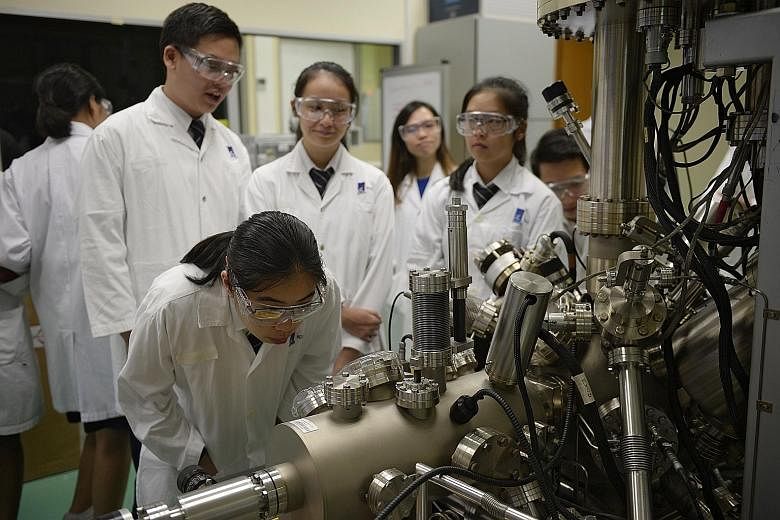Last Thursday, 17-year-old Choo Jia Ying got a glimpse of the work scientists do in Singapore's chemical industry. She was among 21 St Andrew's Junior College (SAJC) students who visited the Institute of Chemical and Engineering Sciences (ICES) on Jurong Island.
The research institute, which does work in chemistry and chemical engineering, belongs to the Agency for Science, Technology and Research (A*Star). The students visited some of the institute's labs and a mini industrial plant, which is used for research projects in the earlier discovery phases.
Said Jia Ying: "In the past I didn't think chemical engineers needed to innovate very much, but now I see how much creativity they need and how they work with other people to come up with new fabrics and polymers. Chemical engineering seems like an exciting industry as it's about experimenting with different possibilities."
The students were part of a programme organised by A*Star and the Ministry of Education to enthuse young people in real-world science. The Scientists in Schools programme, which started a decade ago, matches scientists and researchers from A*Star with schools to help students understand science better.
This year, 29 scientists signed up and were placed in eight junior colleges and two secondary schools. In 2005, there were just six scientists posted to two junior colleges and two secondary schools.
Dr Benjamin Tan, who planned the programme for last week's visit to ICES, his workplace, said he wanted to do his part in promoting science to students. The 31-year-old had also arranged a similar visit for 26 Dunman High School students to ICES in April.
"We showed them our research and how it contributes to the Singapore economy. We also used a case study in the pharmaceutical industry to help them see the relevance of their science lessons," he said.
"I try to introduce research as something that combines different scientific concepts so that they become coherent."
In March, Dr Tan also conducted a lecture for 70 SAJC students to teach them how to understand scientific journal articles. "I pointed out grey areas in a journal article, and how to use reasoning and analytical thinking skills when reading publications," he said.
Dr Ooi Zi En, who joined the Scientists in Schools programme last year, is working with three students from Anderson Junior College to build a nitrogen laser that emits short pulses of UV light for experiments in their school lab.
The students, who have been tasked to get materials such as aluminium foil, metal rail and coins, hope to finish the project by the middle of next year.
"A nitrogen laser can cost $30,000 but the budget given to the students is $200," said Dr Ooi, 36, who works at A*Star's Institute of Materials Research and Engineering. "I'm hoping that if the three of them can put together a laser, that could attract more students to do something like create more lab instruments," he added.


